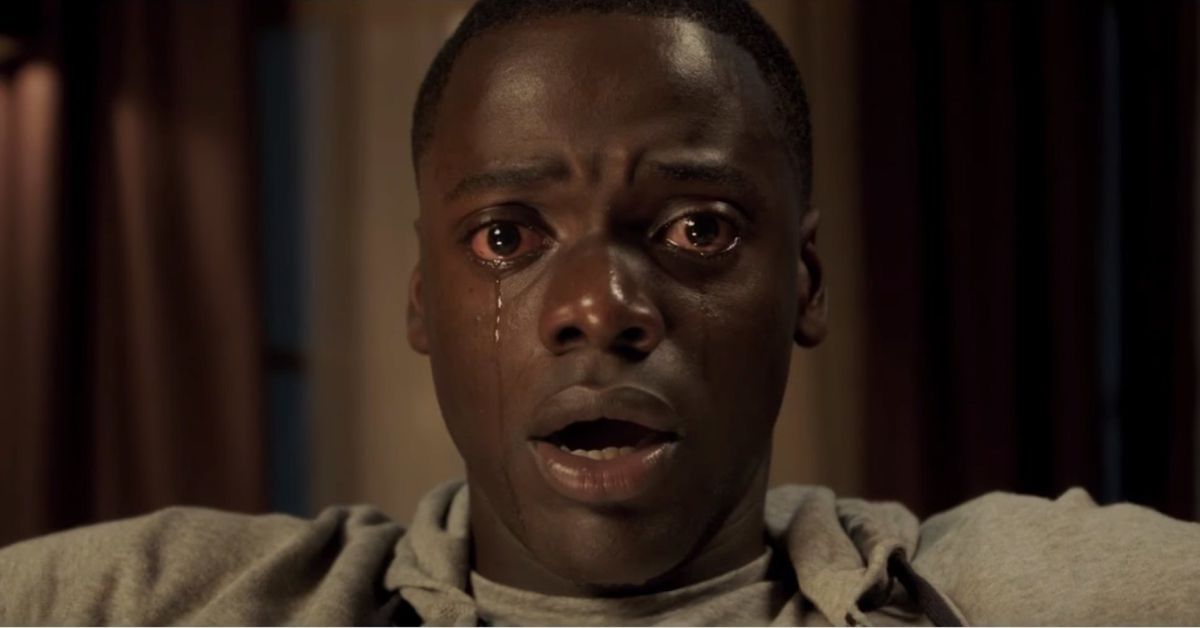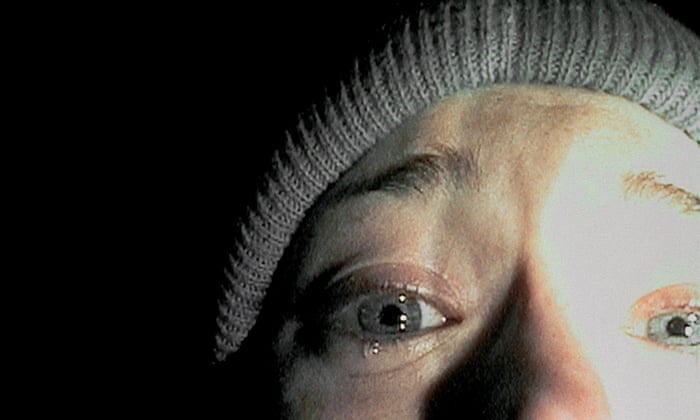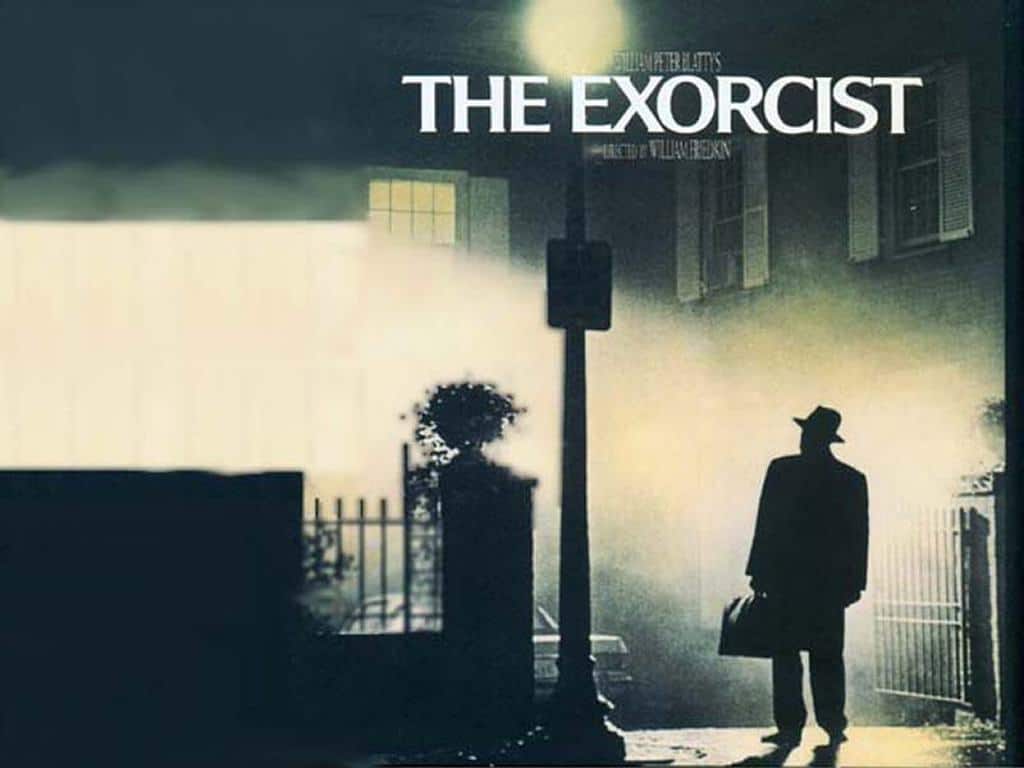In the run-up to Halloween, many film lovers want to watch a bloodcurdling horror. For others, the scariest film they can imagine watching is either The Addams Family or The Nightmare Before Christmas.
Personally, I would happily remain on a strict diet of any movie with romantic walks in autumnal parks and well-knitted sweaters. The mere mention of a horror film gives me palpitations. Will it be scary? Will I have nightmares? Will I not be able to sleep for a solid week? Aspiring film critic I may be, and paranoid I most certainly am. But, I don’t think it would be very professional to disregard an entire genre because I might get scared. For five days in October, I would watch five movies – each designed to be scarier than the last.
Like many children getting petrified at 6pm on a Saturday was just a rite of passage. Everyone has a Doctor Who episode that scared the living daylights out of them. Lucky for me, I got two. The scarring episodes in question? The Empty Child and The Doctor Dances. The monster in this two-parter was a four-year-old child with a gas mask fused on his face. I was eight, and I lived in terror for two straight weeks, and I refused to sleep for that whole time. Many years later, I figured I wasn’t scared of horror films – just uninitiated. I went to watch a showing of The Woman in Black (2012). A ghostly Victorian horror was bound to terrify me – with more bumps in the dark than pieces of popcorn scattered over the cinema floor.
Unfortunately, the seating arrangement was not in my favour. I sat next to a stranger. I couldn’t grab their hand when struck down with terror – I had to remain calm and nonplussed. When something bumped, barked or slammed; the hair on my arms would prickle. This was followed by a laugh into my left ear. And then some coughing. And then a little more manic laughter. My neighbour was not only contributing to all the terror on screen but created an unpleasant 4D experience. Afterwards, I refused point-blank to watch horror films. But it’s time to reassess, and Halloween is the perfect time to do so. Is it possible to destroy the wimp inside?

Jordan Peele’s Get Out was the first film on my horror bucket list. Upon learning that Peele prefers to call his debut a social-thriller, comfort washed over me. Starting with a “real” horror would probably scare me away from the entire project. Released in 2017, Get Out proved to be wildly popular, smashing box office records previously set by The Blair Witch Project for highest-grossing debut film based on an original screenplay. Chris Washington (Daniel Kaluuya), is an African-American photographer meeting his girlfriend’s white parents for the first time. Initially, Peele’s film tricks you. This isn’t a horror, the film says, this is about how the white liberal elites who would totally vote for Obama again, are secretly racist.
The fear in Get Out isn’t abstract; it’s no spook in the attic – racism is a reality for many people. The white audience is also scared too, terrified that they might be a secret racist. Kaluuya delivers a strong performance, and he’s utterly convincing as the everyman Chris. Chris is dragged down to the “sunken place”, and the audience is dragged down with him. Get Out is thought-provoking and satisfying, and after the credits rolled, I was amped up for the following film.

After Get Out, it was time to raise the stakes. Ari Aster’s debut, Hereditary (2018) was up next. After the matriarch dies, the Graham family descend into grief-stricken turmoil, pockmarked with mysterious, unexplained events. This film is filled with unexplained moments and blink-and-you’ll-miss-it scenes of shock. Aster’s decision to create chilling moments in broad daylight is equally innovating and petrifying. The light is no longer safe, and the witching-hour poses the same threat as a scene filmed at noon. But Aster takes the weirdness of grief and loss and remoulds it and crafts it into an incredibly unsettling film.
Unmistakably, this is haunting and unnerving, and I felt deeply unsettled from the moment I pressed play. But I wasn’t as scared as anticipated – probably thanks to Aster’s lack of love for spooky things happening at night, and I felt a little more ready to take on the next three of the week.

Time for the big guns. The Blair Witch Project. I had added this into the list thinking it would just be a little scarier than Aster’s, but this film made my blood run cold and left me trembling like a leaf. The premise of The Blair Witch Project is that it isn’t a scripted film. Rather it’s “found footage”, which was allegedly found in the middle of the woods years after the disappearances of three young filmmakers who were making a documentary on the Blair Witch. The actual filmmakers, Daniel Myrick and Eduardo Sánchez, went to the extreme with this concept. The marketing for the film included missing posters for the actors, police reports covering the “investigation” and the IMDB page listing the actors as “missing, presumed dead” for a year after the film’s release.
Today, this might seem gimmicky, but in 1999, the idea of found-footage was somewhat revolutionary. The messy home-camera filming is more than guaranteed to give you a motion-sickness headache, and the director’s character, Heather, is so righteous it is occasionally tricky to empathise. However, in terms of scariness – this film is a white knuckle ride. Throughout, you only see the students’ terrified reactions, not the witch. As your imagination fills in the gaps, you become more and more petrified.

By this point, I was slightly (read: very) apprehensive about finishing this marathon. Up next was The Omen (1976), the classic horror film starring Gregory Peck and Lee Remick. Robert Thorn is an American ambassador whose wife, Katherine, gives birth to a stillborn. Not wanting to break his wife’s heart, Robert agrees to take a child whose mother died in childbirth and raise him as his own. However, the child is the anti-Christ.
Maybe I had been so profoundly affected by The Blair Witch Project I had reached my fear limit already – this film didn’t even shake me. With the dated effects, misty graveyard and creepy dogs, The Omen never felt threatening. Instead of scary, it became camp. 70s blood and gore haven’t aged well, and in a world of CGI and life-like makeup, they look clownish. Rather than hiding behind the settee, I found myself laughing as the events seemed more silly rather than horrific.

In a twist that no one saw coming, I began to warm towards horror films. I turned to the most significant film of the project, William Friedkin’s The Exorcist. When it was released in 1973, this film was linked with audience members vomiting, fainting and in one case, miscarrying. I knew full well that The Exorcist is considered to be the scariest film ever made by many. I was already deeply regretting choosing this film to end the marathon – would I become traumatised? The lights were on. It was around midday. The Exorcist is the story of a young girl who becomes possessed by the devil. A fabulous slow burn fixated on religion and grief – The Exorcist is incredibly enjoyable as a story itself. Despite its scary credentials, horror in The Exorcist mostly originate from body-horror and shock.
The film has countless scenes of the possessed young girl swearing violently at her mother and performing crude sex acts. These scenes would have shocked audiences in the 1970s senseless. But now, gratuitous violence and sex are even what some audiences expect, so they hardly warrant any kind of outrage. Audiences are now numb to what scared audiences in the past. However, The Exorcist doesn’t need to give you horrendous nightmares, the story alone is intriguing, and between the themes of loss of faith and a mother’s grief, The Exorcist is as compelling as it first was in 1973.
The weekend dawned, and I was momentarily puzzled that the experiment was over. As it turns out, I had actually really enjoyed these five horror films. Intriguingly, none of these films utilises cheap tricks to scare just because they can. Instead, through horror, we can talk about the things we consider taboo; whether that be religion, grief or racism – although I doubt anyone is going to make a horror film based on money. I’ve also come to realise that just because a movie is labelled a horror film doesn’t necessarily mean it’s going to terrify you senseless. I’ve learnt that gruesome horror doesn’t frighten me in the slightest, but bumps in the dark send a chill down my spine. I may still be a wimp, and proudly so, but I’m feeling brave enough to check out Saint Maud this week. Probably.
Words by Lucy Clarke
